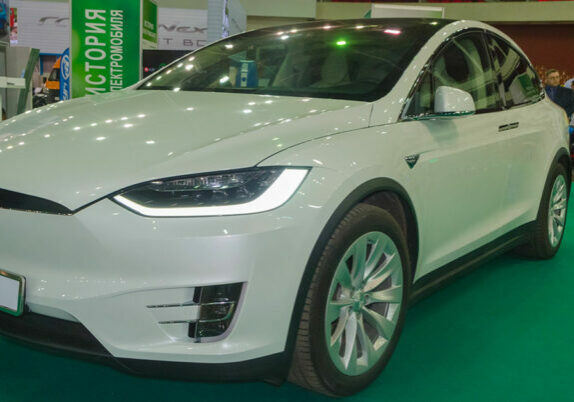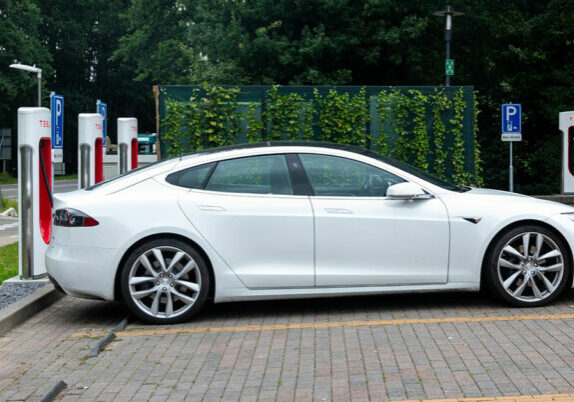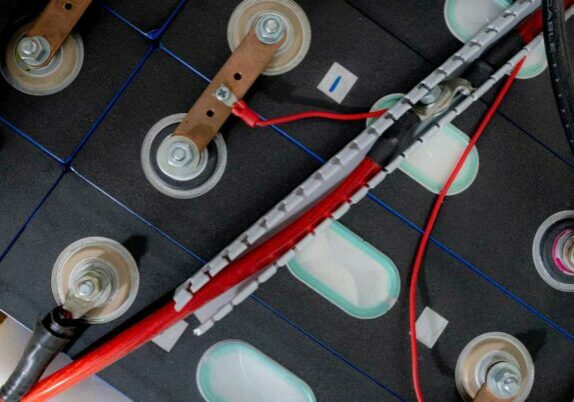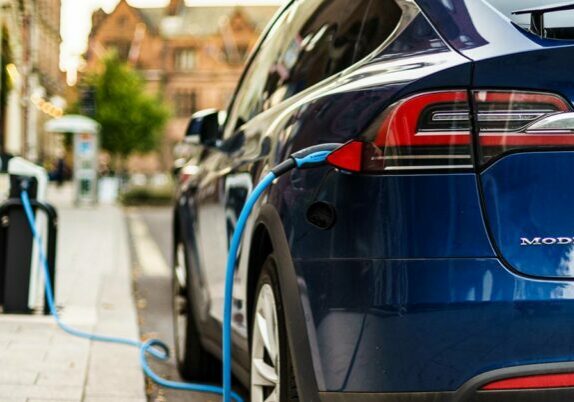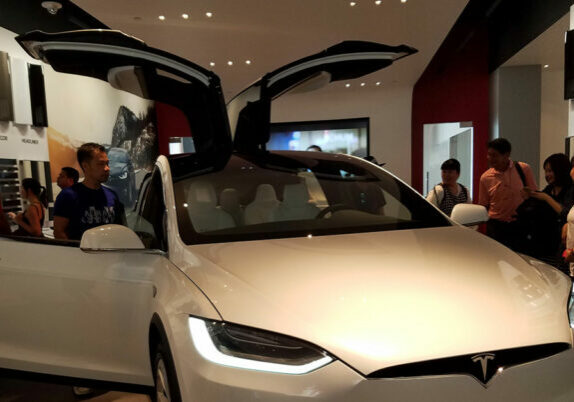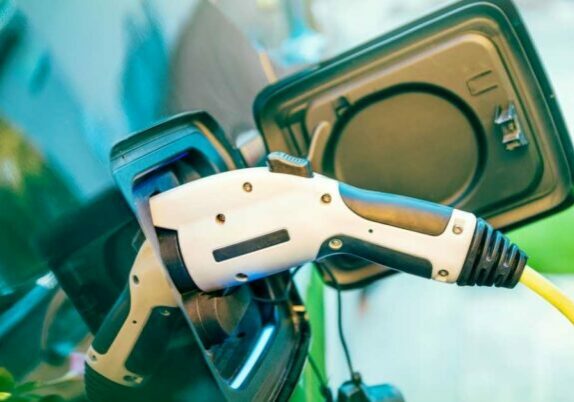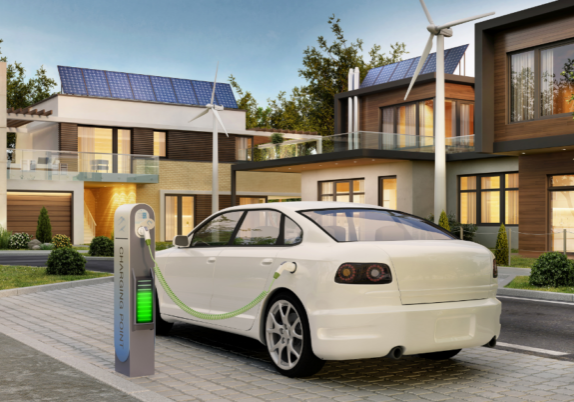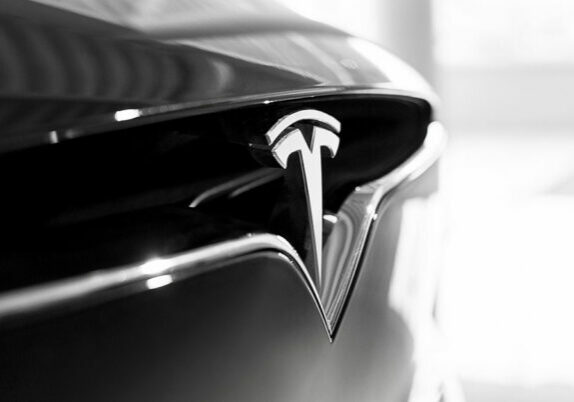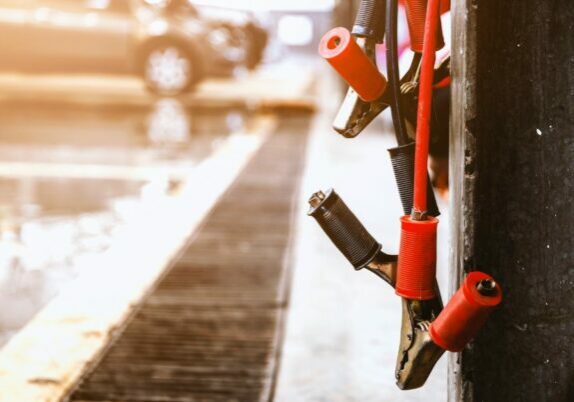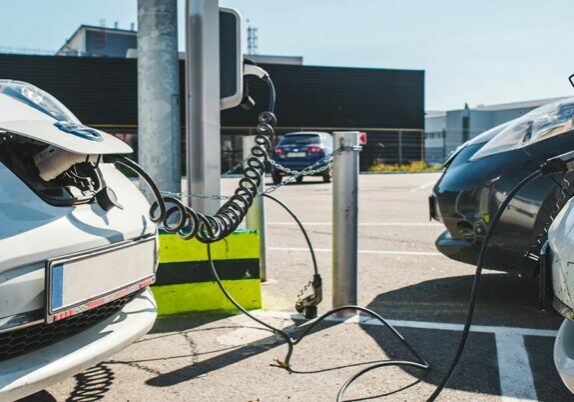Have you ever been stranded on the side of the road with a dead car battery? It’s like being stuck in quicksand, helpless and frustrated. But fear not, for your trusty Tesla may come to the rescue.
Yes, you read that right – your Tesla can jump-start another car. Think of it as a superhero coming to save the day. Your Tesla is equipped with enough power to jump-start most cars on the road today.
While this might seem like an easy fix, there are several precautions and steps you should take before attempting to jump another car with your Tesla. In this article, we’ll guide you through the process of safely and effectively jumping another car using your Tesla’s power source.
So buckle up and get ready to become a hero on the road!
Key Takeaways
- Jump-starting a car with a Tesla requires precautions and safety measures to be taken, such as turning off both vehicles and properly attaching cables without touching metallic surfaces.
- Compatibility between the Tesla’s battery and the dead car’s battery is important in terms of voltage ratings and capacities.
- Rushing during the jump-start process should be avoided, as well as excessive strain on the engine, which can cause serious damage.
- Recharging a low battery with a Tesla involves monitoring energy usage, adjusting driving habits, and using regenerative braking to recharge the battery.
Understanding the Risks Involved
Before attempting to jump a car with your Tesla, it’s crucial to understand the potential risks involved and take necessary precautions. While jumping a car may seem like a simple task, there are several safety measures that must be taken into consideration.
Firstly, you need to ensure that both vehicles are turned off and in park or neutral position before connecting the jumper cables. Secondly, when connecting the cables, make sure that they’re properly attached and not touching each other or any metallic surfaces of either vehicle. This can cause sparks, which could lead to an explosion if there’s any gas leakage from the battery. It’s important to wear gloves and eye protection while handling the cables as well.
Lastly, it’s important to note that jumping a car with your Tesla could potentially damage its battery or electrical system if done incorrectly. Therefore, it’s recommended that you refer to your vehicle owner’s manual for specific instructions on how to jump start another vehicle using your Tesla.
By taking these risks involved seriously and following proper safety measures, you can avoid any accidents or damages during this process.
Precautions to Take Before Attempting to Jump Another Car
First things first, gotta make sure all the electrical components in your whip are turned off and the battery terminals are clean before attempting to give another ride a jolt. Oh, and don’t forget to rock some tunes while you’re at it!
Now that we’ve got that out of the way, let’s talk about the importance of safety when jumping another car with your Tesla.
- Assess the dead car’s electrical system: Before you even think about connecting those jumper cables, take a moment to assess the dead car’s electrical system. Is there any visible damage or corrosion on the battery terminals? Are there any loose wires or other signs of wear and tear? If so, it may not be safe to attempt a jump start.
- Don’t rush: Take your time when jumping another car. Make sure you understand exactly how to connect the cables properly and double-check everything before turning on either vehicle. It’s also important to avoid revving the engine too hard during this process – excessive strain can cause serious damage.
- Keep an eye on both batteries: Once you’ve successfully jumped another car with your Tesla, keep an eye on both batteries for a few minutes after disconnecting them. This will help ensure that they’re holding their charge properly and aren’t experiencing any issues. And remember – if anything seems off or unusual during this process, always err on the side of caution.
Remember – jumping another car with your Tesla can be done safely as long as you take precautions and approach it with knowledge and care. So go ahead, lend a helping hand (or jumpstart) to someone in need – just make sure you do it right!
Checking the Dead Car’s Battery
Now, take a moment to check the dead vehicle’s battery and ensure that it has enough power left to start. Before attempting to jump another car with your Tesla, you need to make sure that the battery in the dead car isn’t completely drained.
Checking battery voltage can give you an idea of how much charge is left in the battery. To check the battery voltage, you’ll need a voltmeter or a multimeter. Connect the red probe of the meter to the positive terminal of the dead car’s battery and connect the black probe to its negative terminal.
The reading on the meter should show between 12.4 and 12.7 volts for a healthy battery. Testing battery health is also important before attempting a jumpstart. If you don’t have access to a voltmeter, turn on the headlights of the dead car and see if they’re bright or dim.
Dim headlights may indicate that there isn’t enough power left in the battery for it to start even with a jump from your Tesla. Taking these precautions can help ensure that both cars remain safe during a jumpstart attempt.
Preparing the Tesla for Jump-Starting
To prepare for jump-starting another vehicle, it’s important to make sure your Tesla is in park and that all accessories are turned off.
Before proceeding with the jump start, it’s essential to determine if the Tesla battery is compatible with the dead car’s battery. If both batteries have similar voltage ratings and capacities, then you can proceed with caution.
It is worth noting that using a Tesla to jump-start another vehicle may not always be the best option. There are alternative jump starting methods available such as using a portable jump starter or jumper cables connected to another gasoline-powered vehicle.
These options may be more practical and convenient in certain situations.
In summary, while it is possible to use a Tesla for jump-starting another car, it’s crucial to ensure compatibility between both batteries. Additionally, there are alternative methods available that may be more appropriate depending on the circumstances at hand.
Always exercise caution when attempting any type of jump start procedure.
Starting the Dead Car
Ready to get the dead vehicle up and running? Let’s fire up that engine! Before starting the dead car, make sure both vehicles are turned off and in park. Double-check all connections – they should be secure and free of corrosion or damage. Remember, safety first – wear protective gear like gloves and eye protection.
To start the dead car, turn on both Tesla Model S batteries. If using a jumper cable, attach the red clamp to the positive terminal of your Tesla battery and then to the positive terminal of the other vehicle’s battery. Attach one black clamp to your Tesla’s negative terminal, then attach the other black clamp somewhere on an unpainted metal surface under your car’s hood. Rev up your Tesla for a few minutes before turning on the ignition of the dead car.
Some common mistakes in jump-starting a vehicle include attaching cables incorrectly (positive-to-negative), not allowing enough time for charging before starting ignition or leaving any lights or accessories on during charging process. An alternative method is using a portable jump starter pack instead of another car. These devices come with built-in cables, so make sure it’s fully charged beforehand.
With proper precautions taken care of and correct connections established, you can now start up that dead vehicle!
Once started successfully, keep both cars running for several minutes while disconnecting cables carefully in reverse order from how they were attached earlier. Now you’re ready to hit those roads again!
Disconnecting the Jumper Cables
After successfully starting the dead vehicle, it’s important to disconnect the jumper cables carefully in reverse order from how they were attached earlier. Jumper cable safety should always be a top priority when dealing with car batteries. Follow these steps to ensure that you safely remove the cables from both vehicles:
- Turn off both cars: Before removing any of the jumper cables, turn off both cars and make sure that they aren’t touching each other.
- Disconnect negative cable: Start by removing the black (negative) cable from the previously dead car’s battery terminal.
- Disconnect positive cable: Next, remove the red (positive) cable from that same battery terminal before moving on to remove them from your Tesla’s battery in reverse order.
It’s also important to have recommended equipment, such as insulated gloves and eye protection, when handling jumper cables. In addition, never allow any metal objects or jewelry to touch both terminals at once, as this can cause a dangerous spark or an explosion.
By following these simple steps and investing in proper equipment, you can safely jump-start a dead car using your Tesla without causing any damage or injury. So always remember to prioritize your safety first when dealing with car batteries!
Monitoring the Tesla’s Battery
When monitoring your Tesla’s battery, it’s important to check for any warning messages or malfunctions that may indicate a problem with the battery. If you notice any issues, it’s recommended that you take your Tesla to a certified technician for inspection and repair.
Additionally, if your battery is low on charge, simply driving the Tesla can help recharge the battery through regenerative braking.
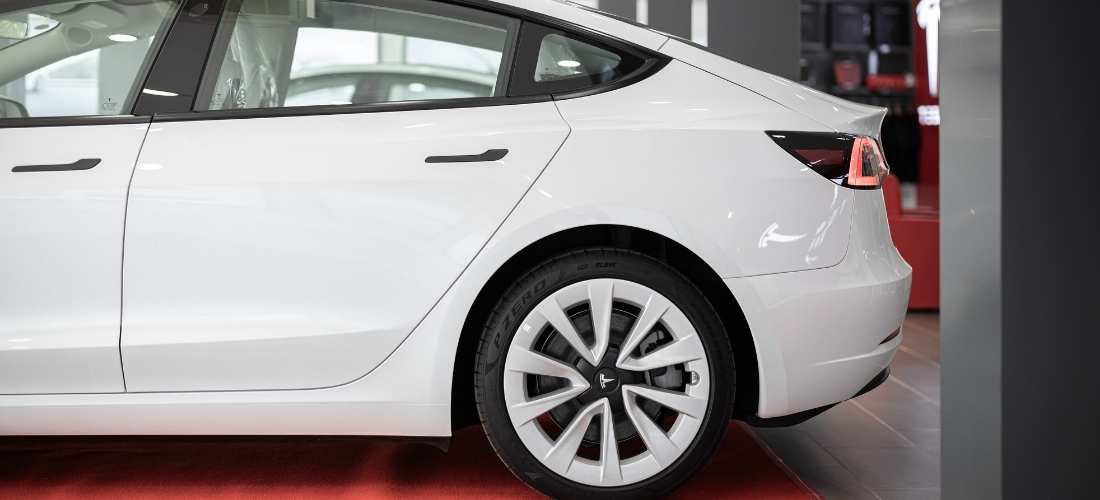
Can You Jump A Car With A Tesla
Check for any Warning Messages or Malfunctions
First, make sure you check your Tesla for any warning messages or malfunctions before attempting to jump a car. Common issues that may arise include a low battery charge, damaged cables, or failed components in the electrical system. If there are any signs of trouble, it’s important to address them first before proceeding with the jump-start process.
To troubleshoot potential issues, consult your Tesla’s user manual or contact customer support for guidance.
It’s also crucial to take safety measures when attempting to jump-start another vehicle. Make sure both cars are turned off and parked with their hoods facing each other. Use only appropriate jumper cables and ensure they are connected correctly to avoid any potential risks such as sparks or explosions.
By taking these precautions and addressing any warning messages or malfunctions beforehand, you can safely and effectively jump-start a car using your Tesla.
Drive the Tesla to Recharge the Battery
As you hit the road with your trusty electric steed, let it gallop across the streets to recharge its battery. Driving your Tesla is a crucial step in preparing to jumpstart another vehicle. Here are some tips to help maximize your drive range and minimize charging time:
- Plan your route: Make sure you choose a route that allows you to drive at a consistent speed without having to stop frequently for traffic or lights.
- Adjust your driving habits: To conserve energy, try accelerating slowly and avoiding sudden stops or aggressive driving.
- Use regenerative braking: Your Tesla’s regenerative braking system can help recharge the battery as you slow down or come to a stop.
- Monitor your energy usage: Keep an eye on your car’s estimated range and adjust your driving habits accordingly.
By following these tips, you’ll be able to get the most out of your drive while also ensuring that your Tesla’s battery is fully charged and ready for any jumpstarting emergencies that may arise.
Conclusion: Jump-Starting Another Car with a Tesla is Possible, but Requires Caution and Care
You can jump-start another car with your Tesla, but it’s important to be cautious and careful. There are several precautions you should take to avoid potential risks and damage to your vehicle. First, make sure the battery in the other car is compatible with your Tesla. If the battery voltage is too low or high, it can cause damage to both cars. Additionally, ensure that both vehicles are turned off before connecting the cables.
To jump-start another car with your Tesla, you’ll need a set of jumper cables and a fully charged Tesla battery. Connect the positive cable from your Tesla’s battery to the positive terminal on the other car’s battery. Next, connect the negative cable from your Tesla’s battery to an unpainted metal surface on the other car’s engine block. Finally, turn on your Tesla and let it run for a few minutes while keeping an eye on both vehicles’ batteries.
While jumping a car with a Tesla is possible, it requires caution and care. It’s important to follow all recommended safety procedures and check for compatibility between batteries before attempting this procedure. With proper precautions in place, you can safely assist another driver in need of a jump-start using your Tesla vehicle as a power source.
| Emotion | Description | Example |
|---|---|---|
| Fear | Feeling of anxiety or concern about potential danger | You may feel fear if you don’t properly connect jumper cables when trying to jump-start another car |
| Relief | Feeling of comfort or alleviation after stress or worry | You will experience relief once you see that both cars have started successfully |
| Confidence | Feeling of trust in one’s abilities or actions | Following all necessary precautions will give you confidence that no harm will come to either vehicle during jump-starting process |
Conclusion
In conclusion, you can jump-start another car with your Tesla, but it requires caution and care. As a responsible Tesla owner, you should understand the risks involved and take necessary precautions before attempting to jump-start another car.
Make sure to check the dead car’s battery and prepare your Tesla accordingly. Once you have started the dead car, make sure to disconnect the jumper cables properly and monitor your Tesla’s battery throughout the process.
Remember, just like in life, jumping another car with your Tesla requires precision and attention to detail. So be patient, meticulous, and don’t rush into things blindly like a bull in a china shop.

